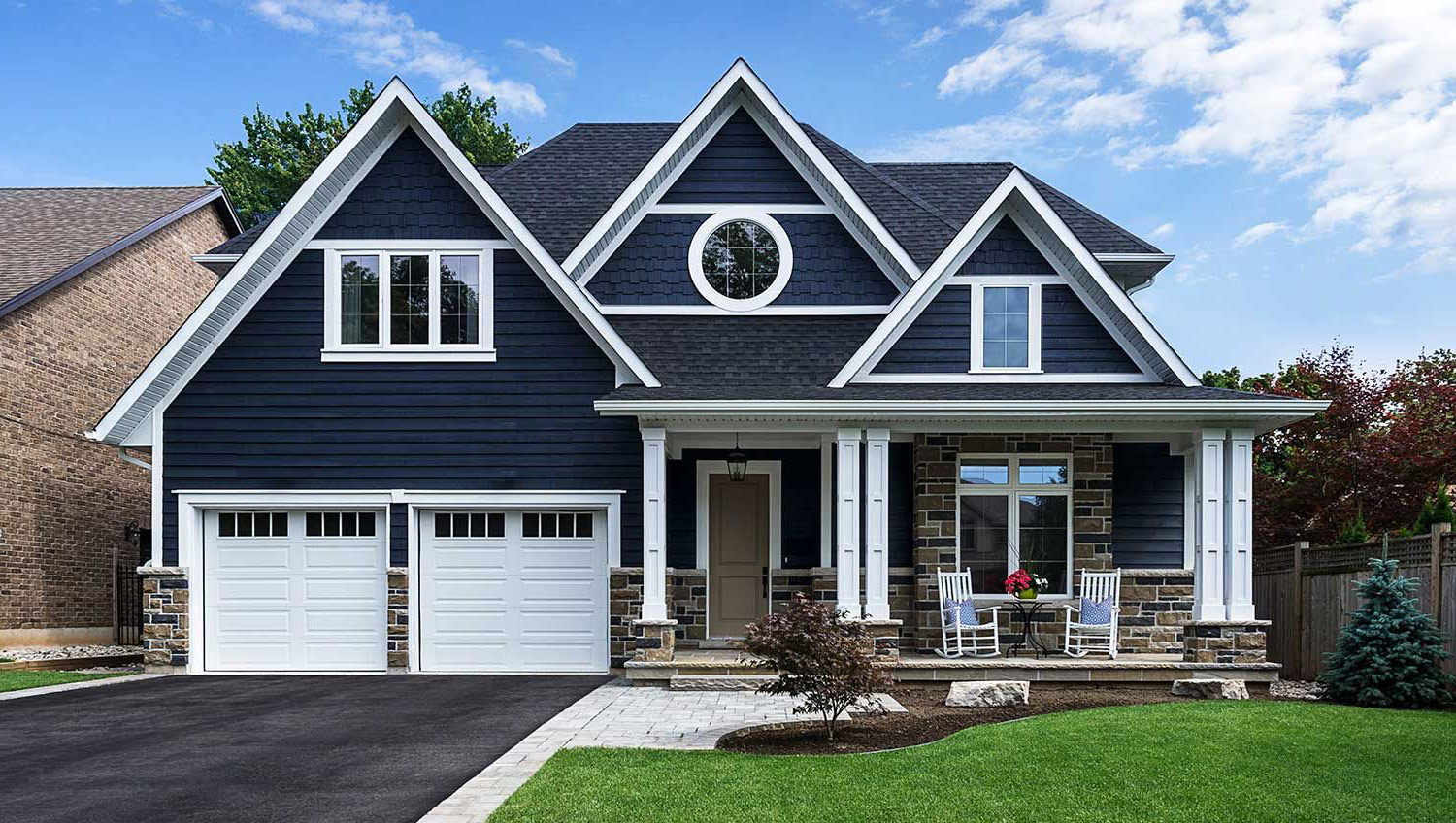My Home’s Exterior – Roofing Materials

As a homeowner, you have a lot to care for. One of the last things on your mind is your roof. That is, until water is pouring through the ceiling! Roofing Systems include everything from the shingles you see on your home’s exterior to sheathing or decking, something you can’t see. Types of roofing materials can depend on your location location, weather patterns, installation process, design, and exposure. Let’s go over the main materials used in residential roofing applications.
Asphalt Shingles – Fiberglass shingles have a base layer of glass fiber reinforcing mat. The mat is then coated with asphalt which contains mineral fillers and makes the fiberglass shingle waterproof. Fiberglass shingles typically obtain a class “A” fire rating as the fiberglass mat resists fire better than organic/paper mats. They are one of the most widely used roofing covers in North America because they have a relatively inexpensive up-front cost and are fairly simple to install. Many shapes and textures of asphalt shingles are available: 3 tab, “signature cut”, t-lock, tie lock, etc. Architectural (laminated) shingles are a multi-layer, laminated shingle which gives more varied, contoured visual effect to a roof surface and add more resistance for water. These shingles are designed to avoid repetitive patterns in the shingle appearance. Special shingles are needed for the eaves starter course and ridge caps. Laminated shingles are heavier and more durable than traditional 3-tab shingle designs.
Wood-Shingle and Shake – Shingles and shakes may be tapered, straight, split or sawn and any combination of these except straight-tapered. Different species and quality of wood are used as are different lengths and installation methods. Shakes and shingles may also be treated with wood preservatives and fire retardants before or after installation. Wood shingles are thin, tapered pieces of wood primarily used to cover roofs and walls of buildings to protect them from the weather. Historically shingles were split from straight grained, knot free bolts of wood. Today shingles are mostly made by being cut which distinguishes them from shakes. A shake is a basic wooden shingle that are made from split logs. Shakes have traditionally been used for roofing and siding applications around the world. Higher grade shakes are typically used for roofing purposes, while the lower grades are used for siding purposes. In either situation, properly installed shakes provide long lasting weather protection and a rustic aesthetic, though they require more maintenance than some other more modern weather-proofing systems. Wood roof installations are considerably more expensive than asphalt. It’s a natural product and prices can be susceptible to the market. Also, the labor is more demanding…requiring each individual piece be placed and secured as opposed to asphalt shingles which are typically installed in 3-foot strips.
Slate – Slate is particularly suitable as a roofing material as it has an extremely low water absorption index of less than 0.4%, making the material waterproof. In fact, this natural slate, which requires only minimal processing, has the lowest embodied energy of all roofing materials. Natural slate is used by building professionals as a result of its beauty and durability. Slate is incredibly durable and can last several hundred years, often with little or no maintenance. Its low water absorption makes it very resistant to frost damage and breakage due to freezing. Natural slate is also fire resistant and energy efficient. Slate roof tiles are usually fixed either with nails, or with hooks as is common with Spanish slate.
Stone Coated Steel – Stone coated metal roof is made from steel or some other metal; the metal is then coated with stone chips and attached to the steel with an acrylic film. The goal is a more durable roof that still retains the aesthetic advantages of a more traditional roofing material. Stone coated metal roofing manufacturing process was adapted by multiple companies, principle of which are Roser, Decra, and Gerrard with production facilities spanning from South Korea to New Zealand. When compared to asphalt shingles and concrete roofing products, which can weigh 350 to 1100 pounds per square, the stone coated metal roof, at only 150 pounds per square, effectively reduces the overhead weight on the house structure.
Tile Shingles – Roof tiles are designed mainly to keep out rain, and are traditionally made from locally available materials such as terracotta or slate. Modern materials such as concrete and plastic are also used and some clay tiles have a waterproof glaze. A large number of shapes (or “profiles”) of roof tiles have evolved.
This can all seem like a lot of jargon and it is. That’s why you trust DHI Roofing. Our experienced project managers will walk with you through the restoration process to ensure you get your property restored effectively and efficiently. We can handle everything from the shed in the backyard to the top of your home.
